Gustave Van de Woestijne
Gustave Van de Woestijne (Dutch: [vɑn də ʋuˈstɛinə]; 2 August 1881 – 21 April 1947) was a Belgian expressionist painter.
Gustave Van de Woestijne | |
|---|---|
| Born | Gustave Van de Woestijne 2 August 1881 , Belgium |
| Died | 21 April 1947 (aged 65) |
| Resting place | Campo Santo |
| Education | "First Group of Latem" |
| Occupation | Painter |
| Movement | Expressionism |

Laatste Avondmaal, Gustave van de Woestyne, 1927, Groeningemuseum, 0040054000.
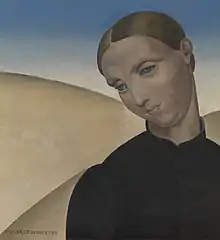
Boerin, ca. 1925, from The Phoebus Foundation collection.
He belonged to the so-called "First Group of Latem", a group of artists who worked in the rural village of Sint-Martens-Latem on the banks of the Lys, near Ghent. He was the brother of the Flemish poet Karel Van de Woestijne. He was buried in the Cemetery of Campo Santo.
Honours
- 1919 : Knight of the Order of Leopold.[1]
Works by him in the Royal Museum of Fine Arts, Antwerp
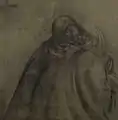 Saint Bernard, 1901
Saint Bernard, 1901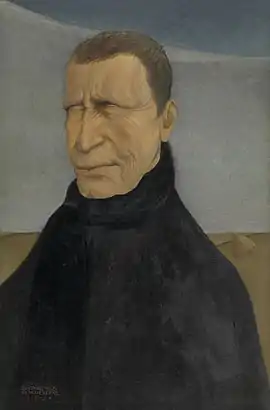 The Blind Man, 1910
The Blind Man, 1910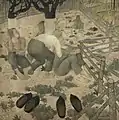 The Sleepers, 1918
The Sleepers, 1918 Adrienne, 1921
Adrienne, 1921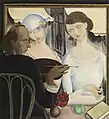 The Liqueur Drinkers, 1922
The Liqueur Drinkers, 1922 Gaston and His Sister, 1923
Gaston and His Sister, 1923 Azure, 1928
Azure, 1928 Still life with Grapes, 1937
Still life with Grapes, 1937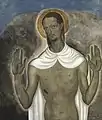 Christ Showing His Wounds, 1921
Christ Showing His Wounds, 1921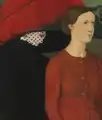 De twee lentes, 1910
De twee lentes, 1910
References
- Royal Decree of H.M. King Albert I on 14 November 1919
This article is issued from Wikipedia. The text is licensed under Creative Commons - Attribution - Sharealike. Additional terms may apply for the media files.